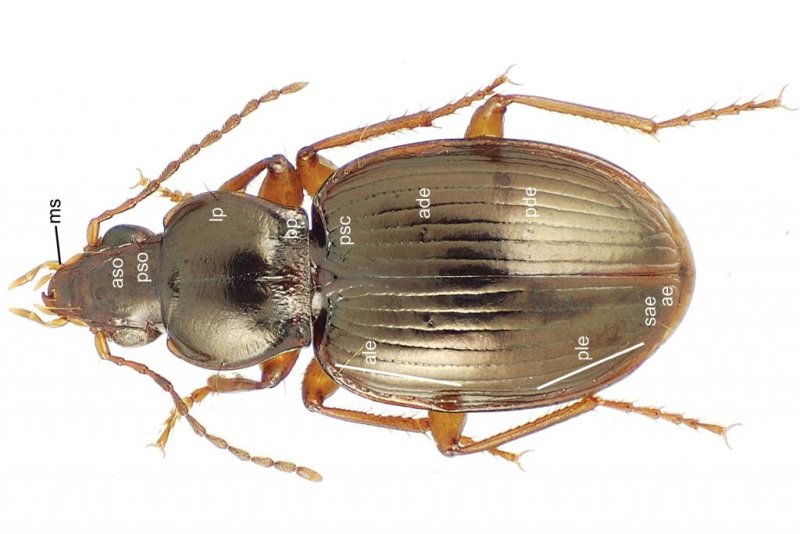1 of 4 | One of 74 new beetle species found on Hawaii's Haleakala volcano. Photo by James K. Liebherr/ZooKeys
MAUI, Hawaii, Dec. 11 (UPI) -- To the delight of entomologist James Liebherr, Hawaii's Haleakala volcano boasts a bounty of beetle biodiversity.
In surveying the insect life of Haleakala -- the larger of the two volcanoes that form Maui Island -- Liebherr located 116 species of round-waisted predatory beetles, 74 of which had never been named in the scientific literature.
The new species -- and the taxonomic reshuffling their discovery required -- were detailed in a new paper, published this week in the journal ZooKeys.
All 116 identified species are members of the beetle genus Mecyclothorax, which evolved from a single colonizing beetle population 1.2 million years ago. The beetles of Haleakala have speciated faster than most other groups of organisms -- faster than Hawaii's Drosophila, a genus of small flies, as well as the cichlid fishes of eastern Africa.
Liebherr, a professor and researcher with the Cornell University Insect Collection, says the volcano's lava flows have isolated pockets of forest all across its slopes, creating microhabitats where beetles take on unique adaptations and diversify. These pockets of forest are further differentiated by elevation changes, mud flows and more.
"Haleakala volcano is a large pie with different sets of beetle species living in the different slices," Liebherr said in a press release. "Actually the different pie slices are just like the original Hawaiian land divisions called ahu pua'a, showing that the Hawaiian people had a keen sense for how their island home was organized."
The beetles' isolated distributions and the dearth of field sampling are the reasons why so many species went undiscovered for so long. Though habitats among the volcano's lower elevations have been disrupted by land conversion, Liebherr believes further field surveys will continue to turn up new insect species among Haleakala's nooks and crannies.
"The substantial level of sympatry, associated with occupation of diverse microhabitats by these beetles, provides ample information useful for monitoring biodiversity of the natural areas of Haleakala."















